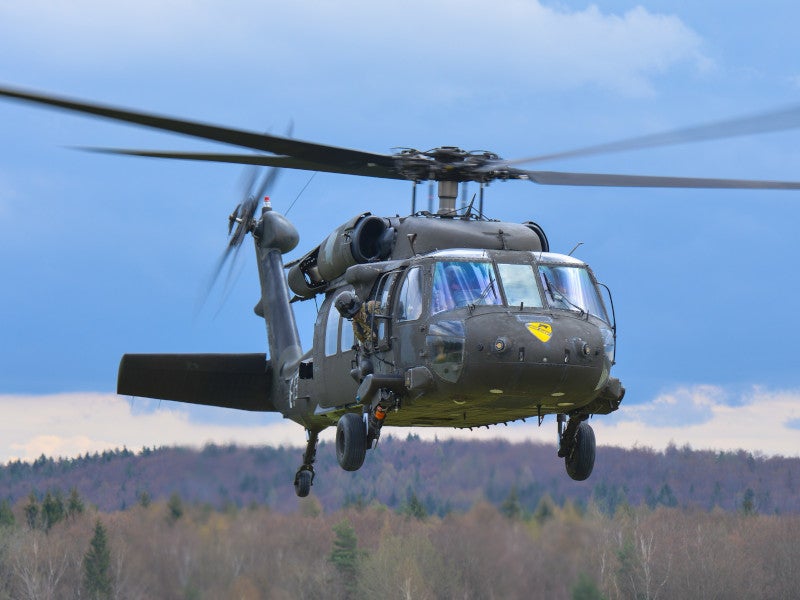Unlocking Peak Performance: UH 60 Helicopter Upkeep Guide
Unlocking Peak Performance: UH 60 Helicopter Upkeep Guide
Blog Article
Understanding the Mechanics and Engineering Behind Uh 60 Helicopters
The UH-60 helicopter, frequently called the Black Hawk, stands as a pinnacle of modern rotorcraft technology, symbolizing a mix of robust design and intricate mechanics. From its beginning to its present versions, the evolution of this aircraft showcases a fusion of development and functionality. As we peel off back the layers of the UH-60's style, a globe of complex systems and precise design comes to light. Understanding the technicians and design behind this flexible airplane reveals a world where accuracy meets power, and where each part plays a vital duty in accomplishing trip.
History of UH-60 Helicopters
The background of UH-60 helicopters traces back to the late 1970s when the USA Military looked for a advanced and functional utility helicopter to replace its aging fleet. In reaction to this need, the Sikorsky Airplane Firm created the UH-60 Black Hawk helicopter. Introduced in 1979, the UH-60 quickly came to be a staple in armed forces operations because of its excellent capabilities.
The UH-60 was designed to master a variety of goals, consisting of army transportation, clinical emptying, electronic war, and unique operations. Its ability to adjust to different duties made it a valuable possession to the U.S. uh 60. Army and other military forces around the globe
Throughout the years, the UH-60 platform has gone through a number of upgrades and variants to improve its performance and maintain speed with progressing goal demands. These helicopters have seen considerable solution in disputes such as the Gulf War, Afghanistan, and Iraq, showcasing their reliability and flexibility in varied operational settings. The UH-60's rich history is a testament to its enduring tradition as a top utility helicopter.

Engine and Power Equipments
Making use of advanced propulsion modern technology, UH-60 helicopters are equipped with sophisticated engine and power systems to ensure ideal performance and reliability in a series of functional circumstances. The UH-60, commonly called the Black Hawk, is powered by two General Electric T700-GE-701D engines, each qualified of providing up to 1,940 shaft horsepower. These turboshaft engines give the essential drive for the helicopter to perform its objectives successfully, including army transport, medical evacuation, and combat support.

Rotor System and The Rules Of Aerodynamics
Just how do the blades system and the rules of aerodynamics of UH-60 Web Site helicopters add to their functional efficiency and trip capacities? The blades system of the UH-60 helicopter plays a vital role in giving lift and propulsion.
Aerodynamics likewise play an essential duty in the performance of UH-60 helicopters. The structured fuselage and rotor blade style reduce drag, allowing the helicopter to achieve greater speeds and much better gas effectiveness. The wind resistant style of the UH-60 also adds to its capability to run in varied environmental problems, consisting of hot temperatures and high altitudes.
Avionics and Trip Control Systems

In its detailed coordination with the rotor system and aerodynamics of UH-60 helicopters, the avionics and trip control systems form an essential network of innovations forming the aircraft's operational capabilities. Avionics encompass the digital systems made use of for communication, navigation, and checking numerous airplane features. In the UH-60, these systems consist of digital screens, interaction radios, GPS navigation, climate radar, and autopilot systems. see this website These avionics systems provide essential details to the pilots, boosting situational awareness and making sure secure and reliable operation of the helicopter.
The flight control systems of the UH-60 are in charge of equating the pilot's inputs right into the suitable modifications to the rotor system, ensuring steady flight and ability to move. These systems include hydraulic actuators, servos, and computers that interact to manage the primary and tail rotors, along with various other trip control surface areas. By exactly taking care of the helicopter's flight dynamics, these systems allow pilots to execute a wide variety of missions, from transport and search-and-rescue to deal with procedures, with accuracy and confidence.
Function and Applications in Aviation
Avionics systems in UH-60 helicopters incorporate a range of digital systems that aid in navigating, communication, monitoring, and regulating various airplane features. These systems consist of digital screens, autopilot systems, interaction radios, GPS navigation tools, and weather condition radar. In addition, these systems incorporate security features such as autopilot modes, terrain awareness advising systems, and stability augmentation systems to boost the general safety and operational capabilities of the UH-60 helicopters in various goals, including troop transport, medical evacuation, search and rescue, and aerial firefighting.
Final Thought
In verdict, the UH-60 helicopter is a functional airplane with an abundant background and advanced engineering. Its engine and power systems, rotor system, the rules of aerodynamics, avionics, and flight control systems all function with each other to make it a reliable and efficient maker.
In its elaborate control with the rotor system and the rules of aerodynamics of UH-60 helicopters, the avionics and trip control systems develop an important network of modern technologies forming the aircraft's operational abilities.The flight control systems of the UH-60 are responsible for translating the pilot's inputs right into the suitable her response changes to the blades system, guaranteeing stable flight and ability to move. Avionics systems in UH-60 helicopters incorporate an array of digital systems that help in navigating, communication, surveillance, and regulating different aircraft features. In addition, these systems integrate security functions such as autopilot modes, surface understanding alerting systems, and stability enhancement systems to improve the general safety and security and operational abilities of the UH-60 helicopters in various goals, including army transport, clinical emptying, search and rescue, and aerial firefighting.
Its engine and power systems, blades system, the rules of aerodynamics, avionics, and flight control systems all function with each other to make it a trusted and efficient equipment.
Report this page